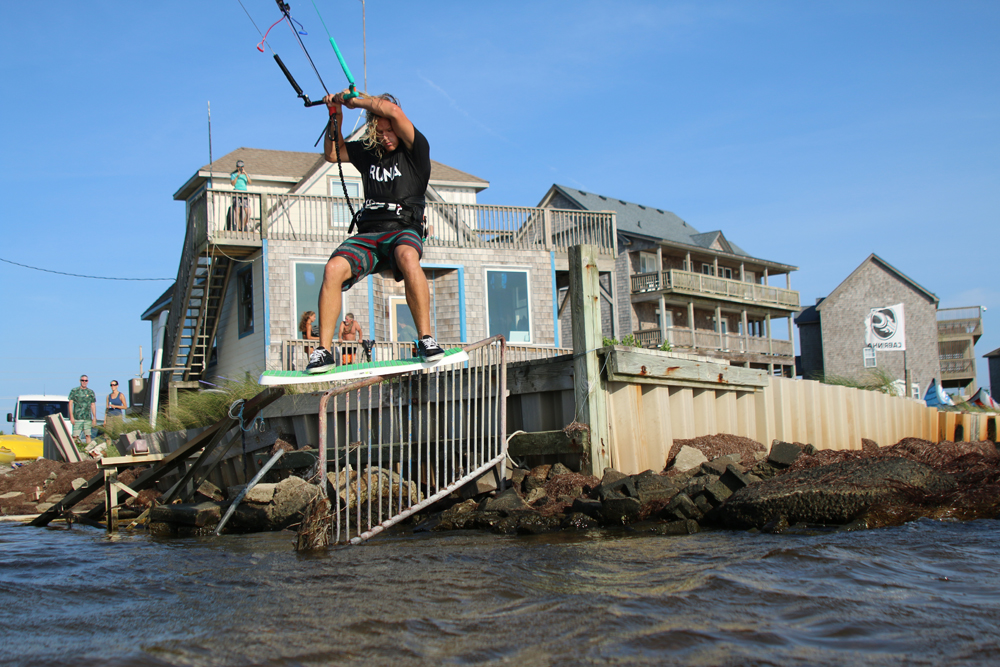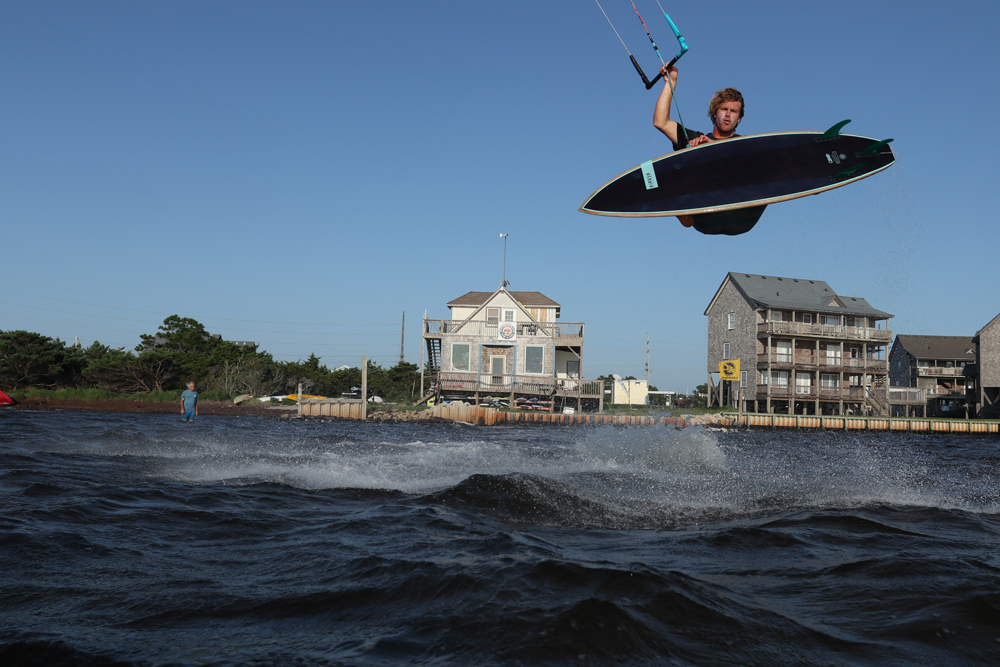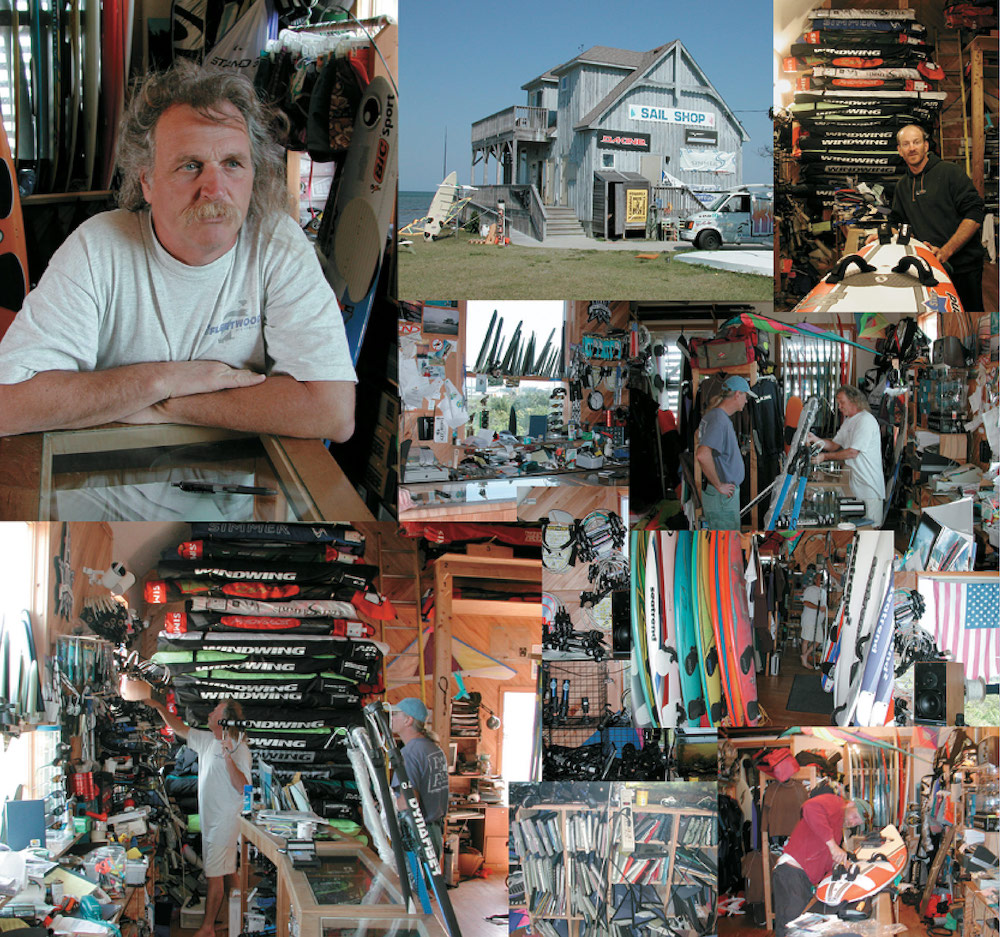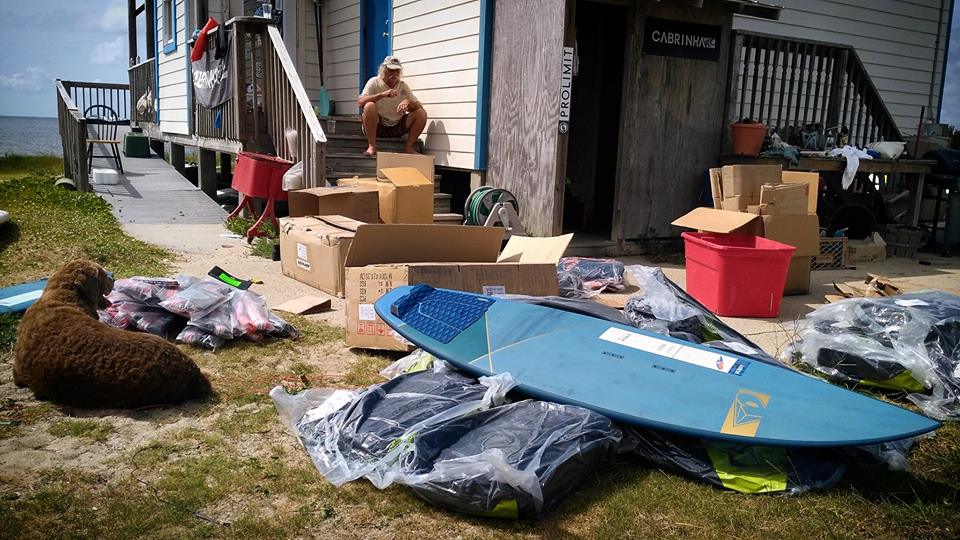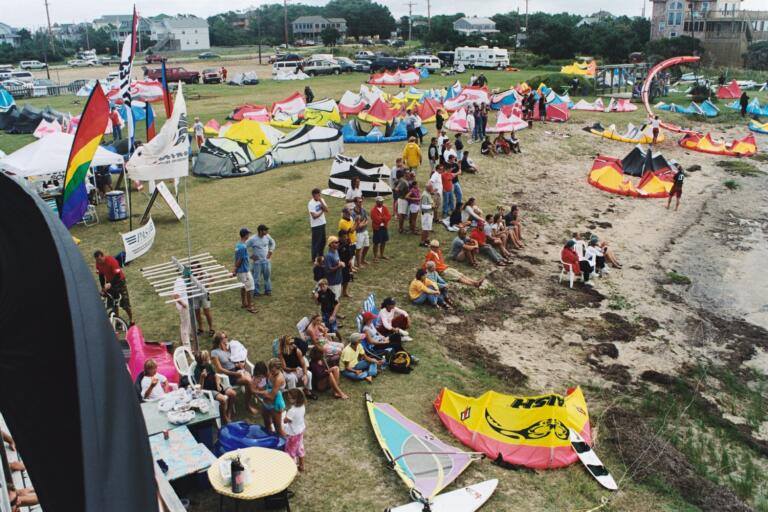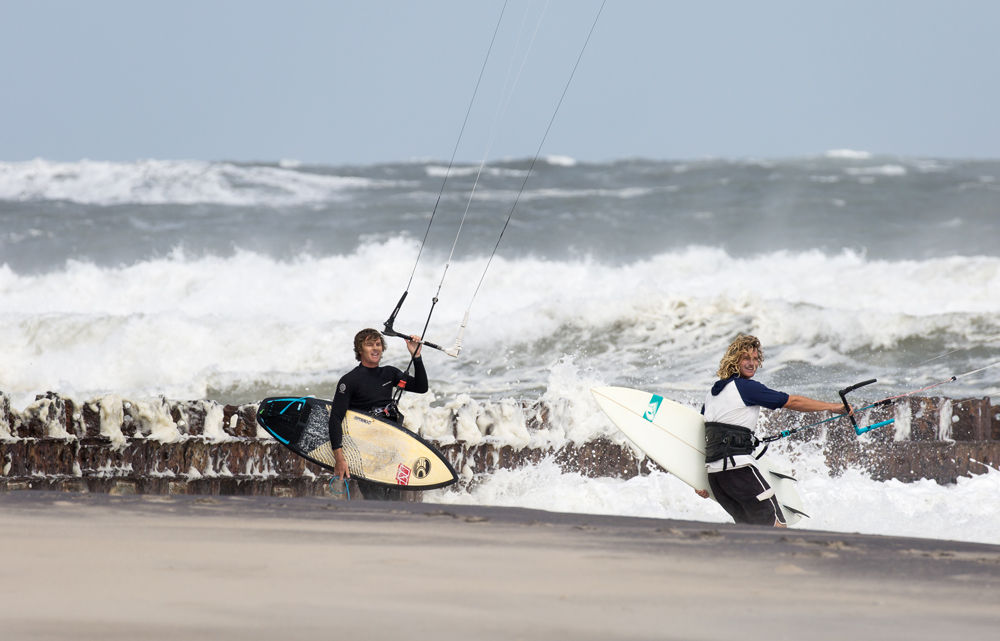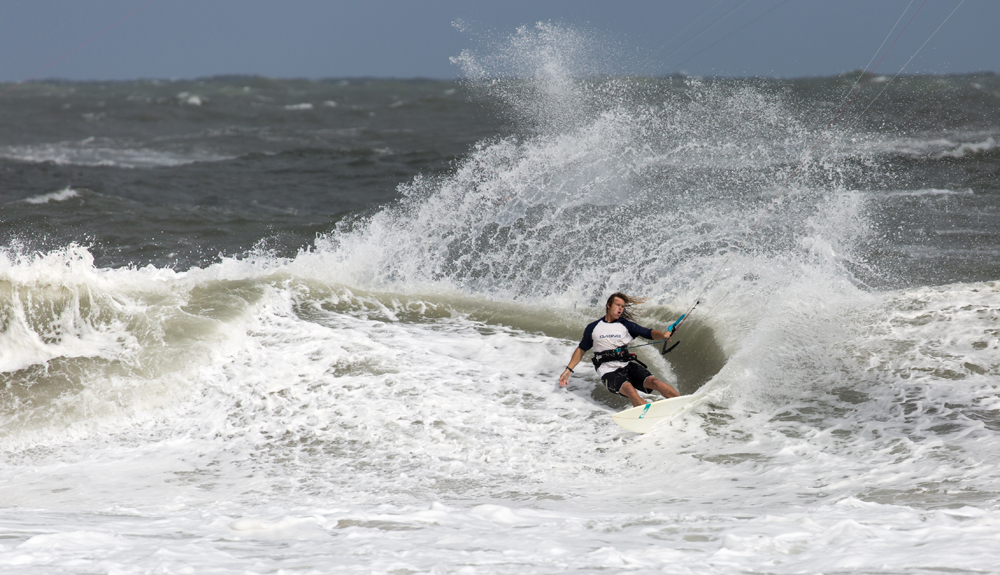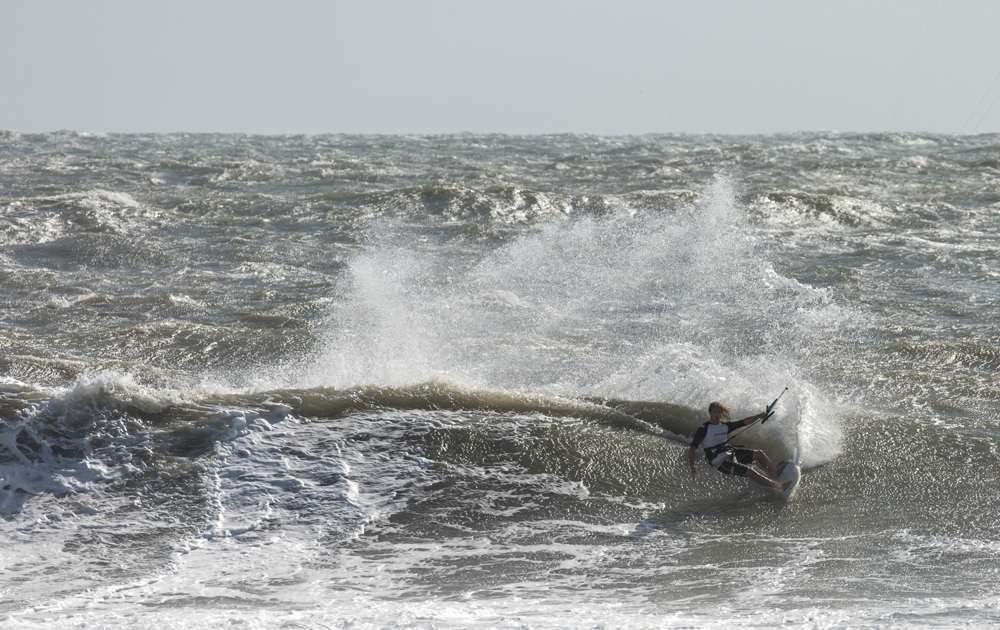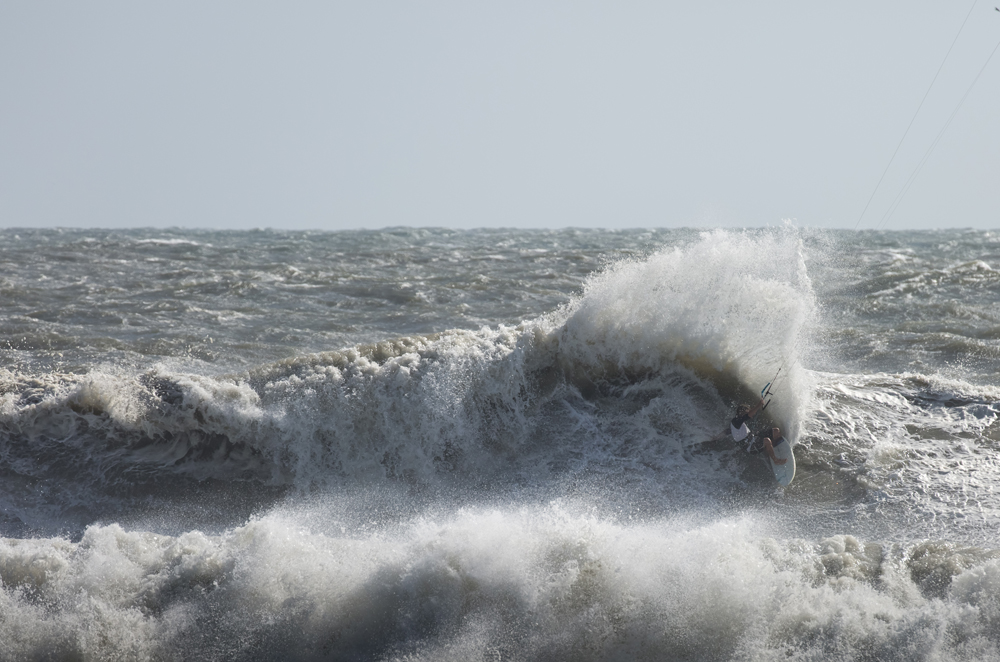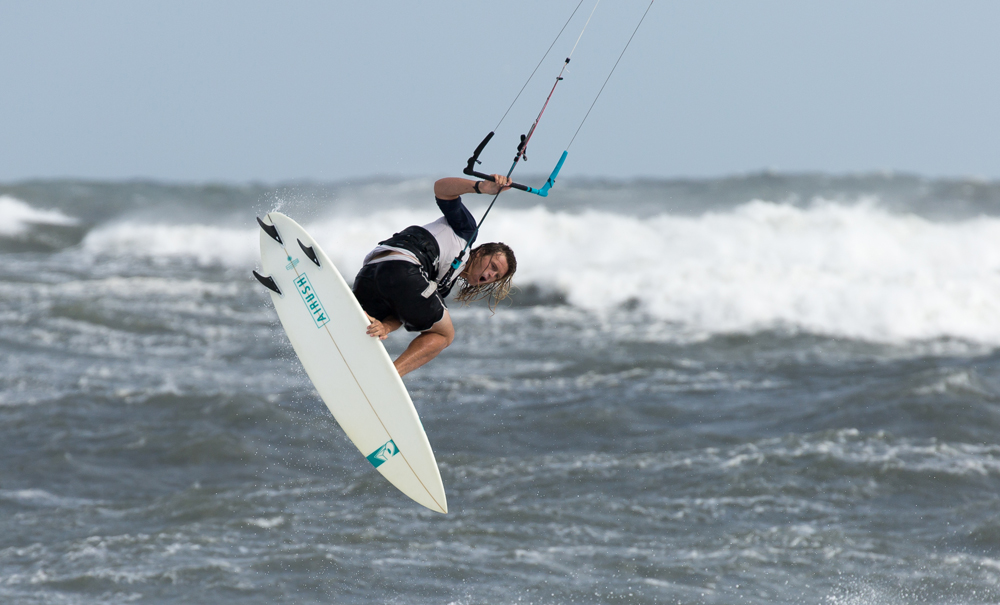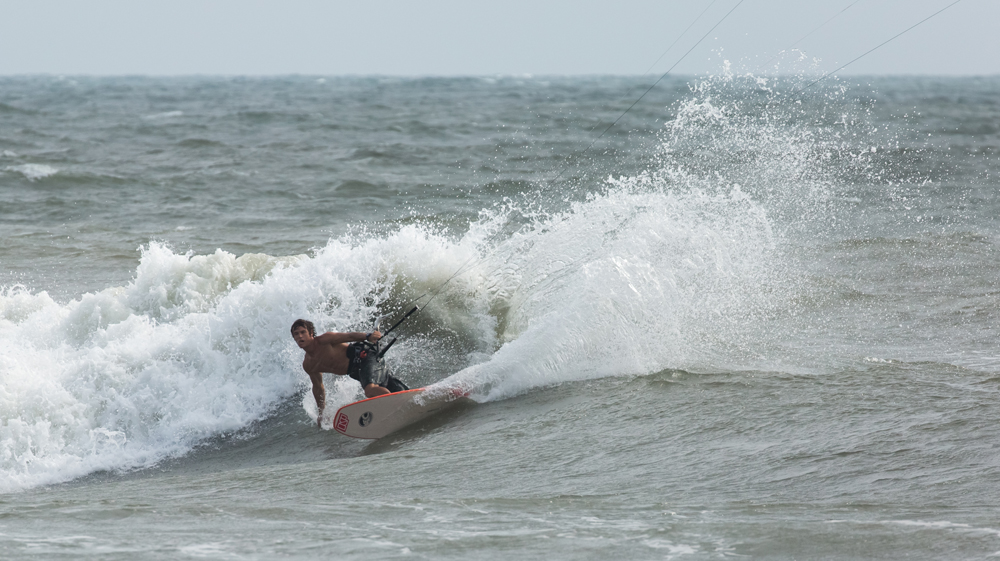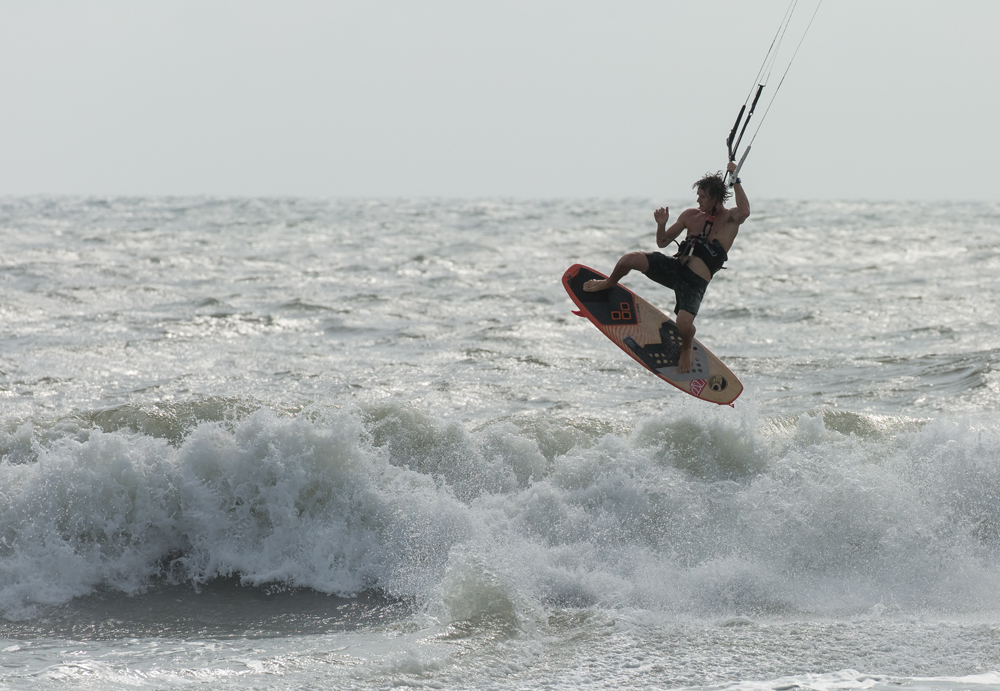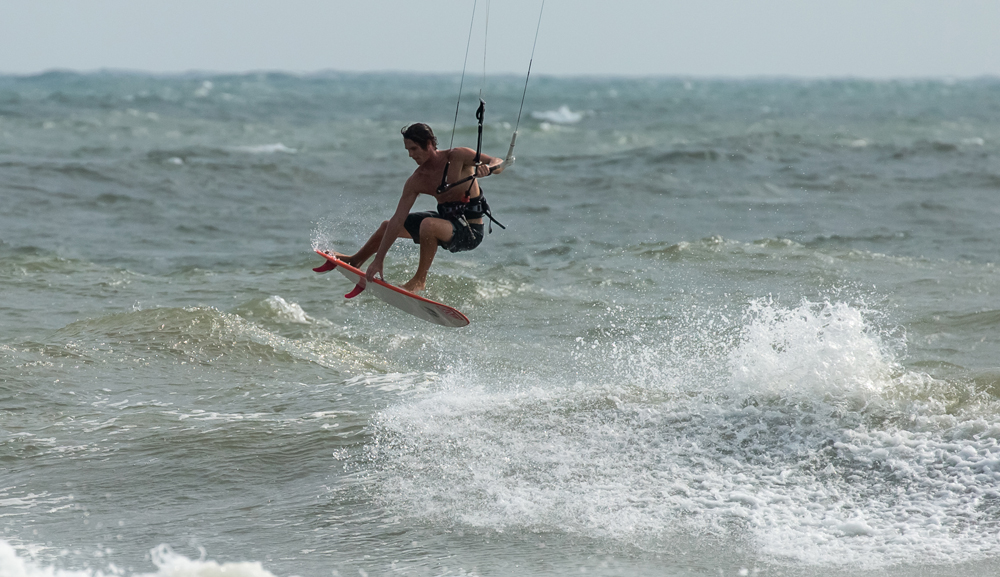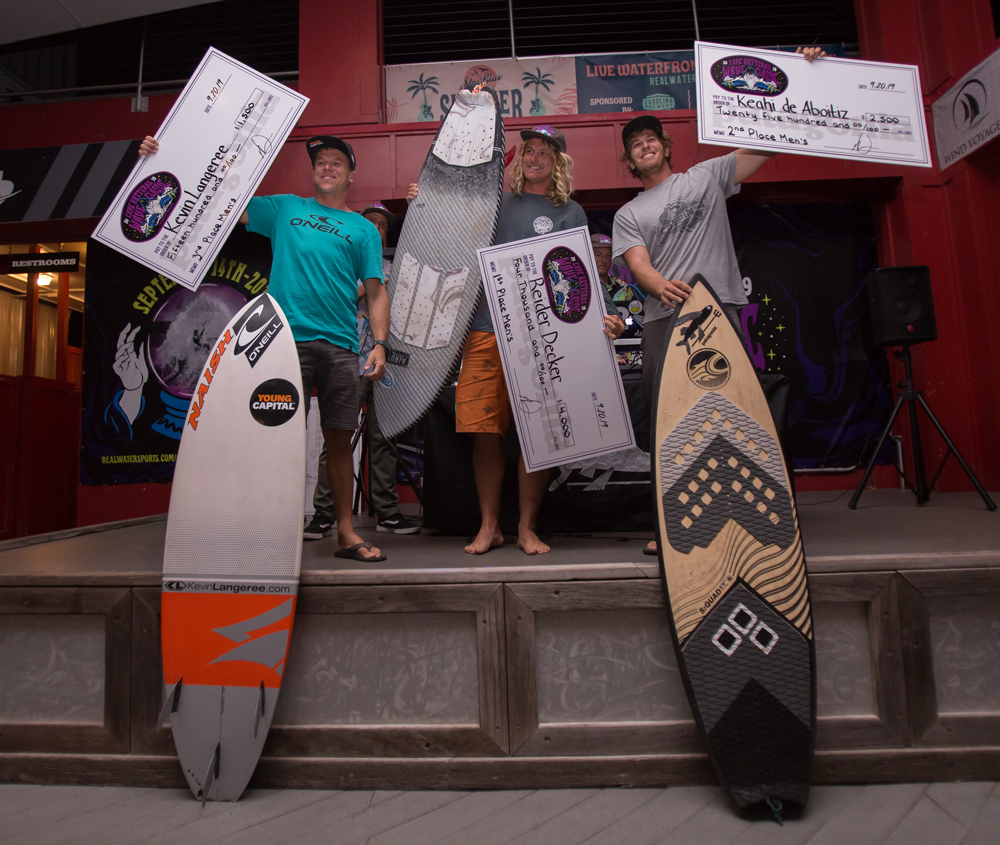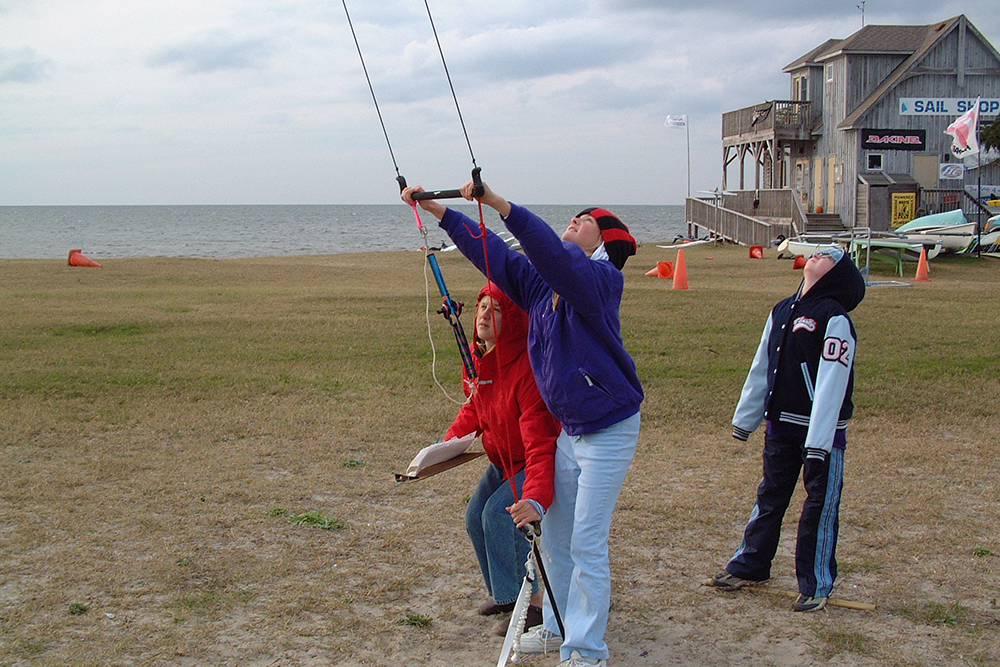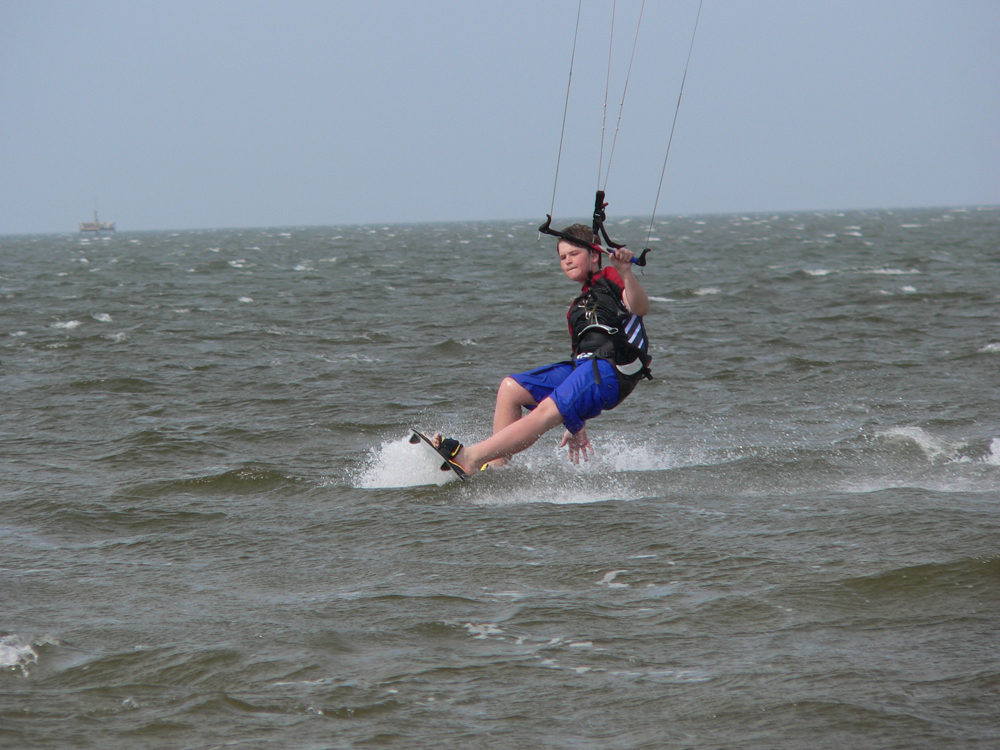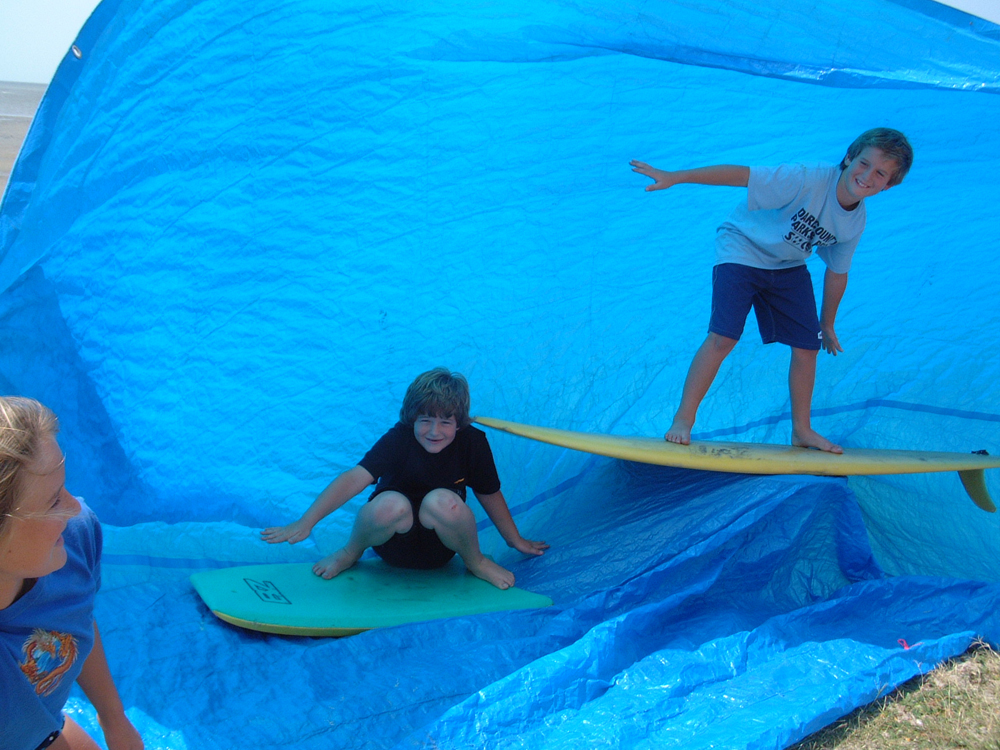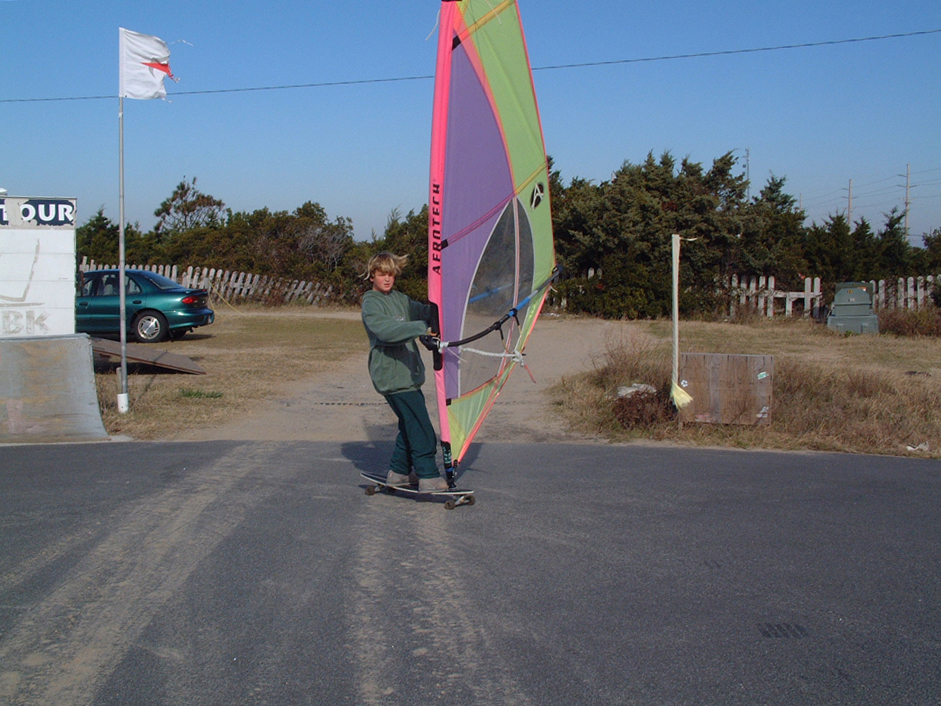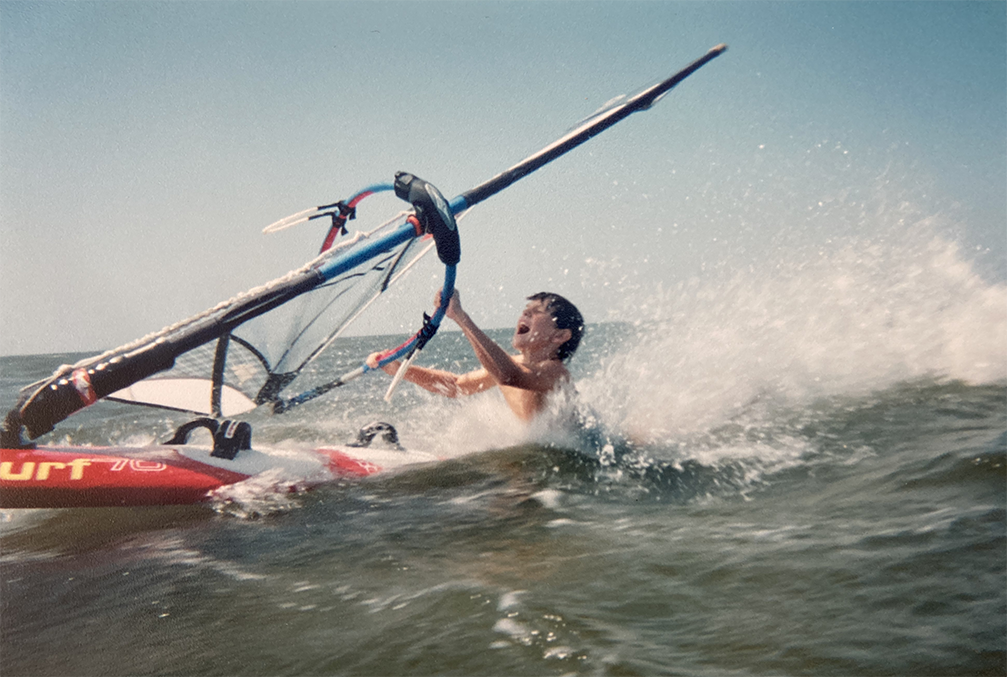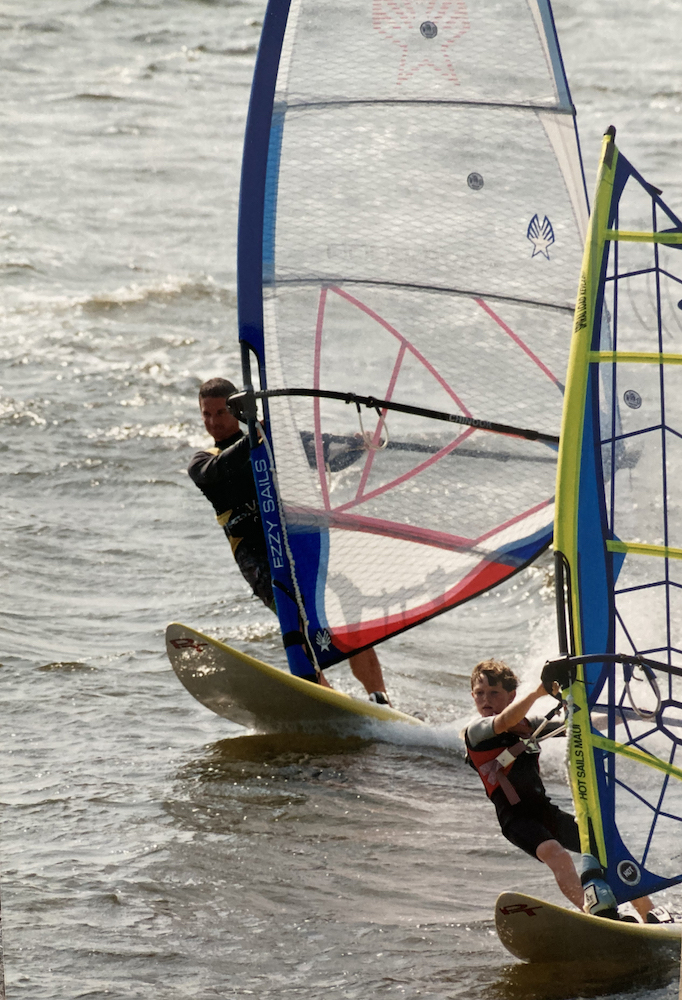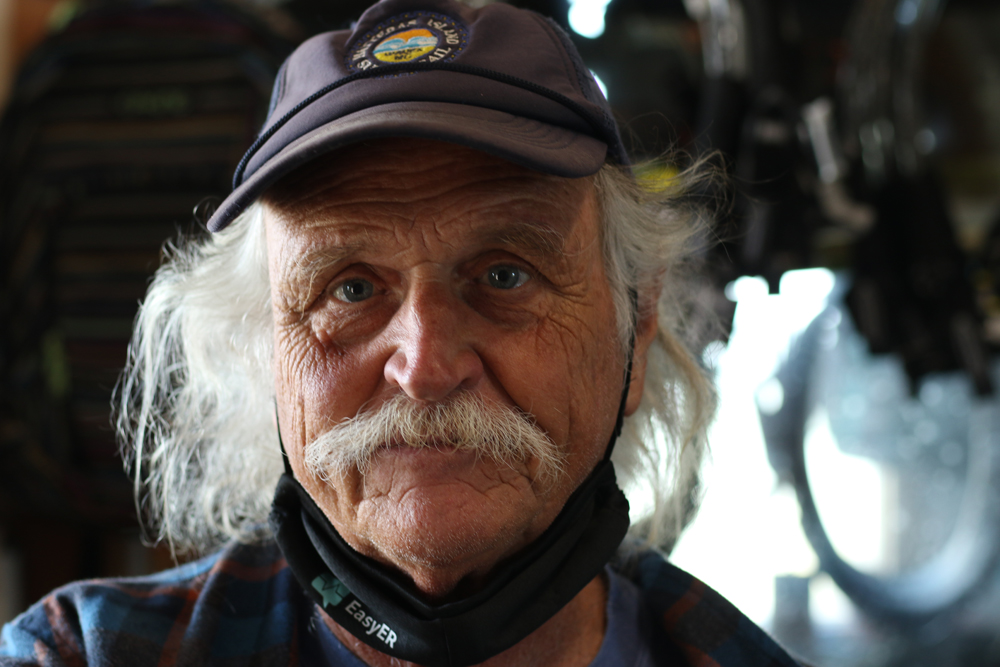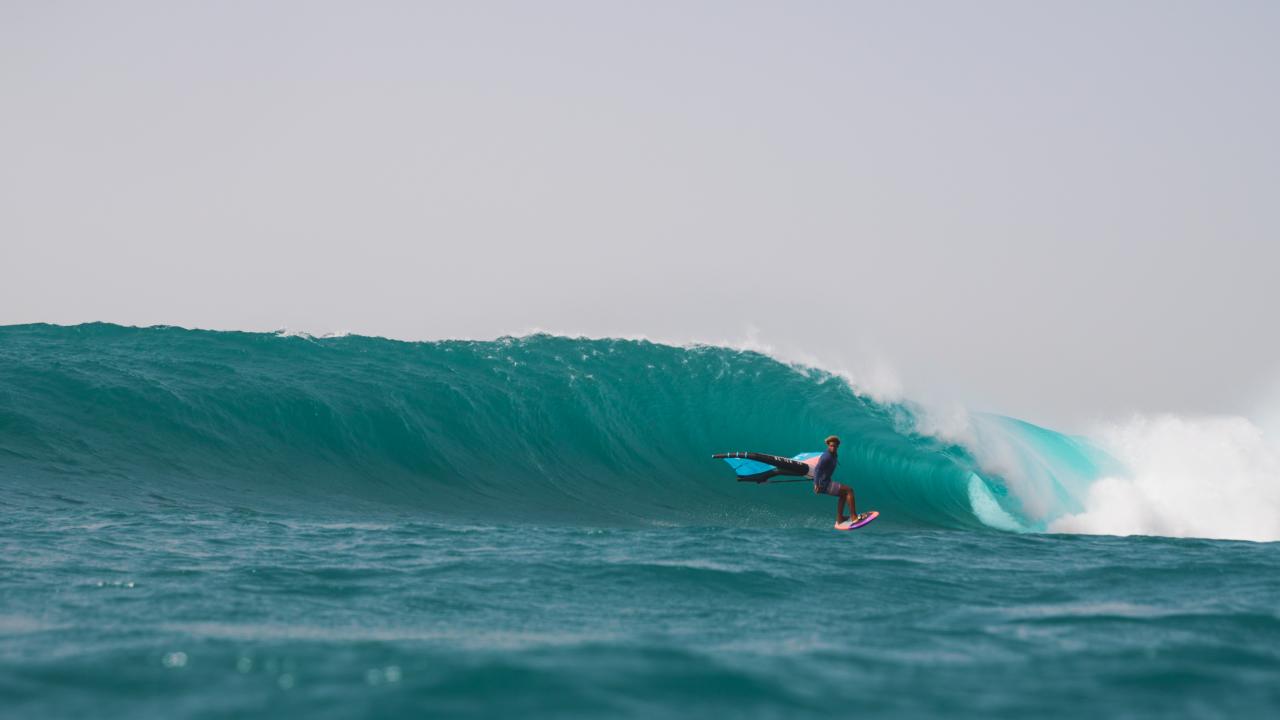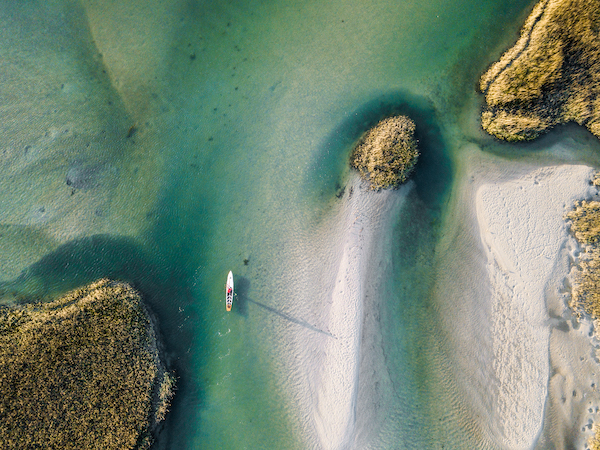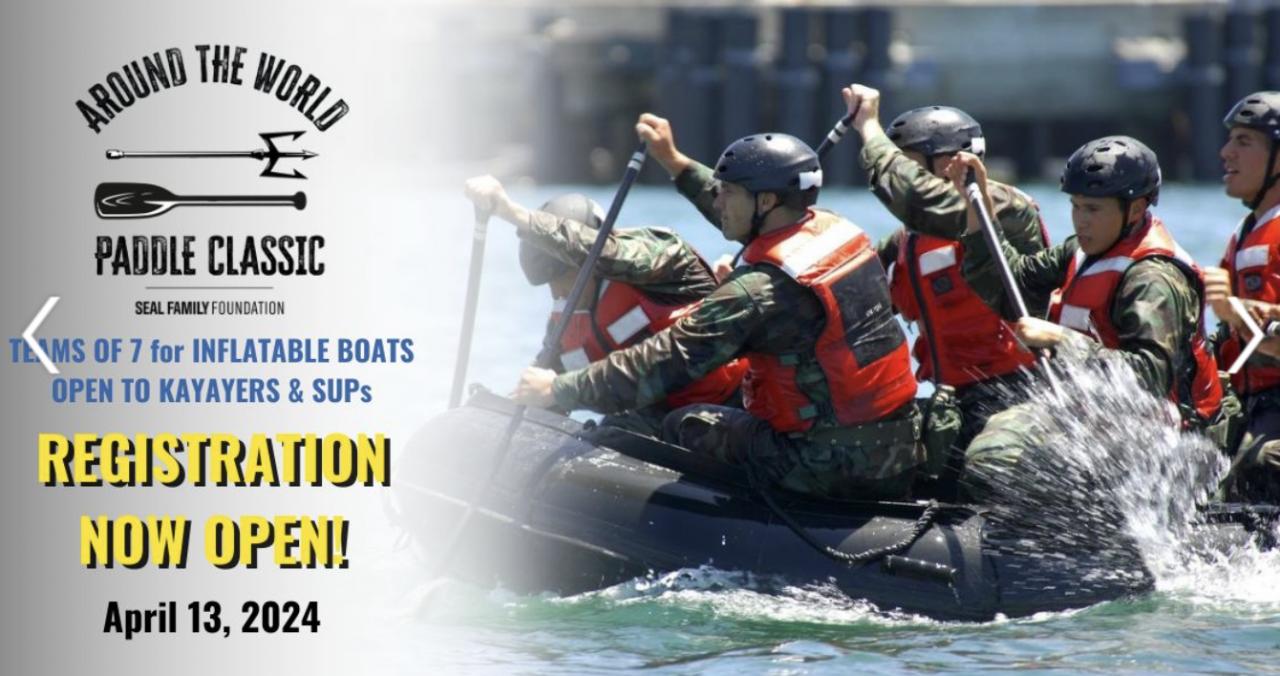If you haven't visited the Hatteras Island Sail Shop, on Cape Hatteras National Seashore a.k.a Outer Banks - you should. The folks who run it have a magnetism almost as strong as the beauty of the area itself.
Barton Decker started the surf shop in 1971 in the old general store and Waves post office. He was really just trying to establish a nice quiver of his own, but as it turned out his friends needed boards too and, unfortunately, he had to mind the shop and run sales as well.
The wind can really crank at a consistent level on Hatteras, so the windsurfing scene started in 1973. Barton acquired an additional parcel of land on the sound side of the island and developed the sail shop that is the anchor retail location still today. Barton’s son, Reider, jokes openly about his Dad’s business model: “Travel to a place where there are no people to open a business”. Reider takes an active role in maintaining and developing the family business. Working at HISS means being able to handle staffing, payroll, rentals, relations, lessons, purchasing, inventory.
Basically the whole family is dedicated to the education of those who choose to want to learn. They have a real passion for helping people have a safe and successful experience on the water. Barton’s approach comes from the skiing industry where he taught lessons and was the supervisor of the children’s ski school at Sugarloaf, but things get more complicated when gear, water and abstract concepts are involved. The combination of kites, bars and boards to teach kiting have been hand selected by Barton and Reider. Not because they are brand new or they got a great deal, but because they perform the best for the conditions that are unique to the outer banks and skill level of each student.
The sail shop property is a temple of empathy for unique shapes, discarded windsurfers, hurricane damaged kayaks, old power and sail boats, Jet Skis, rare parts and the most important thing: caring for people who are realistic and are willing to try. The shop business model is more about family than growth and scale. It's about having a hand on the wheel and staying in touch with the services and relations with visitors. It's about having a tight feedback loop on quality, which in a luxury service industry is something that is difficult when there are layers involved. It's more about pace over perfection. The season will end. There will be hurricanes. There will be massive overwash. There will be employee housing to develop and fix. There will be a new line of products to order, weddings and birthdays, and lots more new tech coming. The water and weather are absolutely what drives so much of the activity on the barrier reef sand bar called Hatteras. It drives tourism, business, and emotions
A tongue in cheek mantra in many parts of the country is also true in the outer banks: There are two seasons on Hatteras: Summer and Construction. The Deckers take DIY to a level relatable only to those who are fiercely independent. Just like in the shop, the family is skilled in various aspects of framing, roofing and painting and general construction. Recently Reider tested the laws of physics by raising his house 19 feet into the air. The water and weather are absolutely what drives so much of the activity on the barrier reef sand bar called Hatteras. It drives tourism, business and emotions.
The HISS business model is also about ending each day with a kite or surf session with fellow shop workers, friends or students who have progressed into independent riding. Whether working on tacks and jibes on the strapless board or launching airs on a twin tip, you will find the shop owner, employees and friends full of play after a long day of teaching windsurfing, kiting or renting kayaks and SUPs. You might even end up back at the shop for a beer and, on a big night, there would be a BBQ after sunset.
Don’t come into the shop in a big rush - there are other problems being solved, even though you may not see or understand them. It could be locating a belt sander for a friend or searching for an 80’s era windsurfing mast base u-joint for a customer's favorite board. Or, more recently, searching for those dang foil mount t-nuts that get lost. Unless you are bleeding - then yes, you go right to the front of the line for treatment. Like the time Pete came in from a NE downwinder in overhead waves, with his nose angled the wrong way and lacerated from a fin on his directional. Luckily, there was a doctor in the shop that day, who happened to be an avid windsurfer. But honestly, come visit and discover the “rest of the story”.
Those who embrace the HISS community often become employees, brand reps or ambassadors in North America. Barton took on the lead caretaker role in his family with his son, Reider, and daughter Vela, along with balancing the business of the surf and sail shop. So he fits in naturally as the role of a father or brother. Part of his success is that he is always in the shop, at home, or in the water taking care of others. He is ultra consistent in those efforts. He’s a “listen and observe first” kind of guy. He reserves judgment and uses anecdotal stories from the past to help emphasize a point. The first full time paid HISS employee saw Barton as a surrogate father in the absence of his own. They stayed in close touch for over 30 yrs while he was a Cabrinha brand ambassador in La Ventana.
The Canadian connection is also alive and well in its second generation. Initially it was mostly windsurfers from Canada that flocked to Hatteras. They were so frequent they carved out a special place now called ‘Canadian Hole’ , just down the road from the shop. Barton is an avid windsurfer and was on the water and willing to session with all the northerners. Now the children of the couples he windsurfed with come down from Canada to surf and kite with Reider and Evan, who was teaching windsurfing at the shop. And with the progression of foiling, Barton is now a beginner windsurf foiler. He is, once again, starting over learning the basics and advancing his skill.
Most of Reider’s friends who kited in the tri-villages (Rodanthe, Waves and Salvo) were two or three years older than he. The early equipment was not tuned for lighter weight riders and did not include the safety systems. When Reider was only 9 years old, he was already kiting and had to be paired with Barton or Chris, another member of the shop team, to hold him down in case the wind came up!
During the early 2000s the first crew of accomplished kiters started to emerge from Barton’s Sail Shop on the Pamlico Sound. Barton’s daughter Vela and her friend Morgan were soon in the water helping each other progress with equipment that was very unforgiving. But it wasn't long and the twintip airs started coming along and those two women started attracting some attention. This was happening inside a windsurfing mecca, and the skepticism then was no different than what happened with winging a little over 2 years ago.
The 15 year old Morgan would go on to win some local contests and be invited to the Red Bull ‘King of the Air’ contests in 2004 and 2005 for the last two years it was held in Maui. The reports from Maui were that she had “kiting performances beyond her years”. Morgan navigated her way into the qualification round and kited at Hookipa in the legendary wave there. As it turns out, Morgan was the second most influential woman, after Evan’s mother, to help Evan into a future in kiting. Now, he might not admit it, but if Evan hadn’t seen those two on the sound getting the accolades and attention back then, we think he wouldn't have been as inspired.
Kiting turned into a passion for Evan and his mother began driving him from Nags Head to the tri villages several times a week. There were some happy parents when he received his drivers license on the very day he became eligible. Evan started riding for national teams under Naish, Airush and later Cabrinha. He took the Cabrinha product sales assignment while still in college in Wilmington. Evan rode for Airush for a while but the sales assignment was more in line with career goals.
It was not easy for Evan to leave Airush, and Airush sensing it, was worried about more attrition. So Airush called Reider and asked him to take Evan’s spot on Maui for the product launch photo shoot. Reider, a freshman in college at the time, was stoked as ever for such a big break. He juggled his schedule and the dates for Maui got mixed up and his flights were missed. Reider openly admits if that trip had happened he might not have finished college as the attraction of kiting in warm waters instead of Hatteras winters was compelling. With everyone on the same page, Reider was on the Maui shoot the next year and balanced the travel with his college commitments.
There was a college kiteboard league that would host a competition of college kiters in the outer banks and this was the first organized contest where Reider and Evan would start to compete. But ‘competing’ is a loose term because the two of them would essentially collaborate on riding strategies for their heats and then later be at a BBQ at the sail shop talking about the next set of goals. This continued for years (and still today), even into the Hatteras Wave Classic where there was real money for the podium and lots of outside competition from Europe, California and Hawaii. On the eve of the contest, the two would sit and discuss the merits and scoring potential of lien vs. method grabs on tweaked strapless airs. And then if you happen to witness the conversation and watch it play out on the water, many contestants are blown away that these guys from a little town in Hatteras could make it look so good.
A common question that people ask is who is a better kiter; Evan or Reider? Of course, it's subjective, but there are key strengths they both clearly demonstrate. Two areas where Evan dominates are light wind and overall versatility. Even in the lightest of wind, where most strapless riders are frustrated in the waves, Evan can glide , float and lift airs off the lip and carry his momentum into bottom turns. And, if you take a broad spectrum of products offered by Cabrihna, you can see Evan excel across them - from kite loops on twintips, wave riding and strapless freestyle, to winging and foiling. The versatility of his skillset is tough to rival.
His ability comes from working with dozens of different products across a handful of windsports companies. While Reider can certainly jump on any board, kite or foil that comes through the shop door, and teach anyone how to ride them while having fun doing it as well, he excels in the combination of strapless freestyle in waves of consequence.
The Hatteras Wave Classic was not planned for September by accident. Trip, who runs Real, the title sponsor, knows that hurricanes are likely and the accompanying NE wind on the season change offers the biggest waves on the east coast. Hatteras is thick, dredgy and super heavy with lips that are as thick as the wave is high. The shifting and varying depth of sand bars can create opportunity or wreak havoc. It's home to as many broken bones as it is to broken boards. Committing to super critical sections of the wave, with deep gauging turns is where you will find Reider. The combination of power, flow and style has put him on the podium several times. Evan and Reider have shared podiums on both coasts and it's always really special to see it happen. They travel together to compete in Maui, Hood Oregon, Baja and as far away as Africa. The two of them have never let politics, business or competition ruin their friendship.
It's a common theme in team and individual sports to have set workout times and locations. To a degree, it happens in kiting as well. Behind the sail shop in the summer when the SW wind builds, there are the pre-sunset sessions where you can see the evolution of skill and drive of Reider and Evan. Warm water and small chop with consistent 7mph SW winds gives Hatteras athletes the opportunity to train and work on kiting tricks. The effort that goes into developing any single trick combined with the number of wipeouts that occur during attempts would grind down a lot of kiters.
A common theme of the kite shop sessions is collaboration, experimentation and development between riders to push themselves and the sport forward. Snapping fins, breaking boards, banging rails to bones are common occurrences. The ocean downwinder experience is more difficult to plan due to wind and swell directions.*
*(Most of the Hatteras crew likes a true north wind as the waves wrap better, but Northeast and even Northwest wind can work. A side-off wind at the lighthouse can also be an amazing setting. The opposite end of the island can also offer world class rights and solid lefts on a proper SW when combined with a south swell. )
But there is always a degree of local magic when choosing the route. The downwinders are just as important as the shop sessions and they always coordinate and make it happen. If you happen to be lucky to be in the water for any of those sessions, well, count your stars. Other than riding in a heat in a contest, there is no better place to witness and learn from amazing kiters.
There is a rich history of surfing and wind sports at the Decker’s shops on Hatteras, and there have always been great personalities associated with it. If you haven't already been (or even if you have), maybe it's a good time to visit the Hatteras Island Sail Shop in Waves on the Pamlico sound. “It's right behind the Dairy Queen!”.

